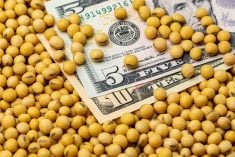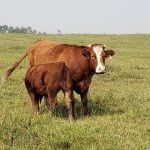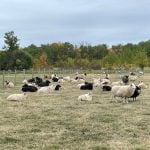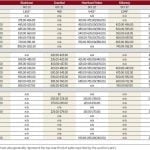Feedlot buying interest remained firm last week as feeder cattle supplies dwindle in line with the seasonal tendency. Small strings of feeders with mixed characteristics were well bid at the higher levels with no signal that this overall trend has come to an end.
Once again, larger-frame Simmental-based feeders weighing just under 800 pounds were quoted at $198 per hundredweight (cwt) delivered in the Lethbridge area. While the market for 700-plus-lb. replacements continues to percolate higher, prices for lighter weights and pee-wee calves has stagnated over the past couple weeks. It appears major feedlots have been buying these feather-light cattle due to the potential strength in the deferred months. Ownership is the main factor in this unprecedented market and placing lighter cattle in a backgrounding operation or on grass for 100 days may reduce risk longer-term. U.S. feeder cattle values were up $5-$8/cwt in comparison to seven days earlier and the deferred feeder cattle futures continue to make all-time fresh highs. Therefore, cattle feeders in southern Alberta are wondering how much higher this market can move with barley now solidly trading at in the range of $215-$220 per tonne delivered. Alberta packers were buying fed cattle in the range of $146-$148/cwt last week, which is slightly softer compared to a week earlier. Feeding margins are coming under pressure and with break-even prices forecasted at $142-$145/cwt for the September and October timeframe, we are starting to see nervous jitters at the higher levels. Longer-term it is inevitable we will see feeder cattle prices bid up to the level of zero margin in the feedlot sector.
Read Also

U.S. grains: Soy futures set 15-month high after China agrees to purchases
U.S. soybean futures reached a 15-month high on Thursday after President Donald Trump’s administration said top-importer China agreed to buy tens of millions of tons of American crops in the next few years as part of a trade truce.
New-crop U.S. corn values are grinding lower as traders factor in trend yields for the upcoming crop. This has underpinned deferred feeder cattle futures. However, barley fundamentals have potential to be quite snug in the upcoming crop year. Feeder cattle exports to the U.S. are expected to stay strong if lower costs per pound gain materialize in the Midwest versus Western Canada. Fed cattle in the U.S. southern Plains were trading at $144/cwt, down $2/cwt from two weeks earlier. Look for the feeder market to stabilize if the fed market experiences seasonal weakness into June and July.
U.S. wholesale choice beef prices edged higher last week after a minor slump earlier in May. Equity markets continue to trade near all-time highs and U.S. GDP is expected to improve in the second quarter. U.S. beef production will increase in the second quarter and consumption levels need to improve to sustain the higher price structure for wholesale beef and fed cattle.
– Jerry Klassen is a commodity market analyst in Winnipeg and maintains an interest in the family feedlot in southern Alberta. He writes an in-depth biweekly commentary, Canadian Feedlot and Cattle Market Analysis, for feedlot operators in Canada. He can be reached by email at [email protected] for questions or comments.











